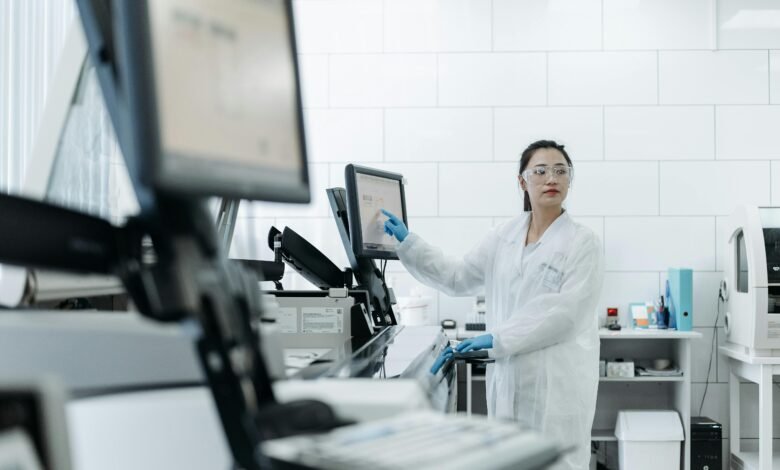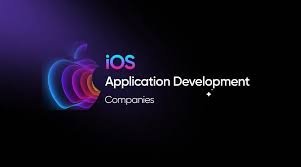How Technology is Transforming Healthcare Education?

Healthcare industry is transforming at a rapid rate, influenced by the ever changing healthcare environment, drastically changing medical science and the changing role of physicians. Technology is transforming healthcare education, making learning more interactive, accessible, and effective. From virtual reality simulations to AI-driven tutoring, modern advancements are enhancing how medical students and healthcare professionals acquire knowledge and skills.
The actual goal of integrating technology in healthcare education is to facilitate medical knowledge acquisition, improve decision making skills, learn team training and polish skill coordination. Many medical schools have started using VR, AR and AI in medical training, and simulation-based learning, helping students to strengthen their concepts and clinical skills.
In addition to Caribbean medical school, many healthcare organizations and hospitals are using these immersive technologies to provide clinical training for doctors and other health practitioners.
Here’s a look at the significant ways technology is shaping healthcare education.
- VR and AR in Medical Training
The integration of virtual reality (VR) and augmented reality (AR) into medical training is transforming the way healthcare professionals learn, practice, and refine their skills. These technologies provide immersive, interactive experiences that enhance medical education, improve patient outcomes, and reduce risks associated with real-world training. Many medical schools in the Caribbean and U.S. foster interactive 3D environments in classrooms to help aspiring physicians understand the concepts.
Benefits of AR and VR in Medical Training
- VR enables students to rehearse complex procedures in a virtual operating room, reducing errors in real surgeries, improving precision and confidence.
- It allows students to make mistakes and learn from them without putting real patients at risk.
- AR tools like HoloLens and Touch Surgery provide interactive 3D anatomical models that students can explore from all angles.
- Medical students can interact with detailed AR models, improving understanding and memory retention.
- VR simulations allow students and doctors to analyze real patient cases, improving diagnostic accuracy.
- AR overlays can help guide healthcare professionals during operations by displaying real-time data, such as CT scans and vital signs, on AR headsets.
- VR prepares medical students for high-pressure situations such as cardiac arrest, trauma response, and mass casualty events.
- Medical teams can practice teamwork and communication in virtual settings to improve real-world collaboration.
- AI and Personalized Learning
Artificial intelligence and personalized learning are playing increasingly significant roles in the medical training and healthcare industry, transforming both how medical professionals are trained and how patients are treated. In fact, AI has the potential to revolutionize medical education by providing tools that enhance learning experiences and help trainees develop clinical skills more effectively.
Similarly, AI is rapidly transforming healthcare delivery by improving diagnostics, treatment plans, and patient care processes. AI technology has the potential to make medical training more accessible and effective. It also ensures that healthcare delivery becomes more precise, efficient, and patient-centered.
Benefits of AI and Personalized Learning
- AI can significantly reduce human error in both healthcare and medical training, enhancing accuracy and consistency.
- With personalized treatment plans and early detection of diseases, patients benefit from more targeted and effective care, leading to improved health outcomes.
- AI helps medical professionals acquire and retain skills faster, shortening the time required to become proficient in specific medical fields.
- AI-driven efficiencies can reduce the cost of healthcare services by improving resource management, minimizing unnecessary tests, and optimizing treatment protocols.
- AI-powered platforms provide real-time feedback and adaptive learning experiences that can train aspiring physicians efficiently.
- AI-driven simulations help students practice diagnosing conditions based on real-world patient data.
- AI-powered NLP systems enable healthcare professionals to navigate electronic health records (EHR) more efficiently.
- AI can analyze student performance and suggest personalized study plans to improve learning.
- AI technologies enable remote monitoring of patients through wearables and other devices. This data is processed in real time to provide useful insights into a patient’s vitals and other important record and alert healthcare providers if any issues arise.
- Simulation-Based Learning & Robotics
Simulation-based learning and robotics are revolutionizing healthcare and medical training by offering innovative and hands-on methods to enhance clinical skills, improve patient care, and ensure safer, more efficient practices. Both technologies allow learners and healthcare professionals to practice and refine their skills in controlled, risk-free environments, reducing the chances of errors in real-world settings.
Simulation-based learning uses advanced technologies to create realistic healthcare scenarios for medical students, residents, and professionals to practice skills, make decisions, and develop competence without risking patient safety. Simulated learning centers in Caribbean medical schools provide a safe, experiential environment for students to practice medical skills and procedures, learn from mistakes, and develop crucial clinical behaviors without compromising patient well-being.
Benefits of Simulation-based Learning and Robotics
- Medical students can practice specific procedures, from basic suturing to complex surgeries like organ transplants, in a controlled virtual environment by using simulators before performing them on patients.
- Simulations are ideal for practicing emergency situations like trauma care or cardiovascular resuscitation.
- Simulations help medical students develop critical thinking and diagnostic skills by exposing them to a variety of patient cases, helping them practice diagnosing and making decisions in different clinical situations.
- Robotic surgery allows students to learn how to perform precise operations with greater control, flexibility, and accuracy.
- Robots allow for precise movements with smaller incisions, leading to faster recovery times, less pain, and a lower risk of infection.
- Robotic surgery allows students to perform procedures remotely, making it easier for patients in remote areas to access advanced care.
- Big Data & Electronic Health Records (EHRs)
Big data and Electronic Health Records (EHRs) are reshaping both medical education and healthcare. These technologies provide the foundation for data-driven decision-making, personalized care, and advanced learning methodologies – all of which improve both the practice of medicine and the training of future healthcare professionals. These technologies facilitate better decision-making, improve patient care, and foster innovation.
Benefits of Big Data and EHRs
- Learning how to navigate electronic health records prepares students for real-world clinical practice.
- Big data enables better clinical research and evidence-based decision-making.
- The integration of big data and EHRs allows medical professionals to make more informed, data-driven decisions, leading to better outcomes, fewer errors, and more efficient treatment.
- Both big data and EHRs contribute to personalized learning for medical students and personalized care for patients. Access to vast patient data sets allows students to study trends and improve diagnostic skills.
- Big data helps tailor learning experiences, while EHRs enable the customization of care plans to individual patients. You can streamline healthcare operations, reduce administrative work by digitizing patient records, optimize resource allocation and improve clinical workflows.
- Big data analytics and EHR systems provide healthcare professionals with the tools to make faster and more accurate decisions, leading to quicker diagnosis, timely interventions, and improved patient satisfaction.
Conclusion
Technology is revolutionizing healthcare education by making learning more immersive, efficient, and accessible. As advancements continue, future healthcare professionals will be better equipped with the knowledge and skills needed to provide high-quality care. Embracing these innovations will ensure the next generation of medical professionals is prepared for the evolving demands of the healthcare industry.



